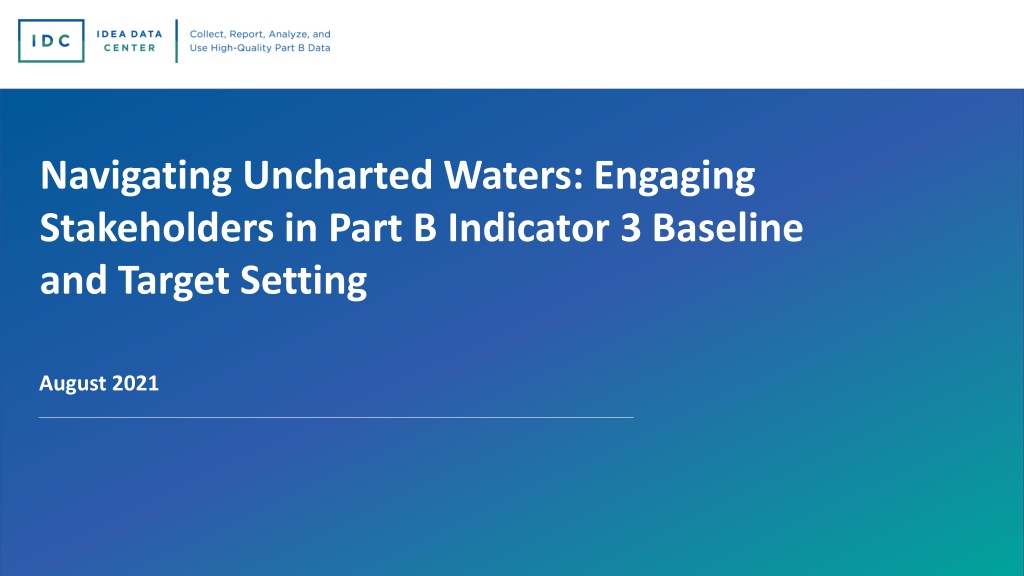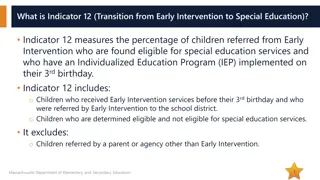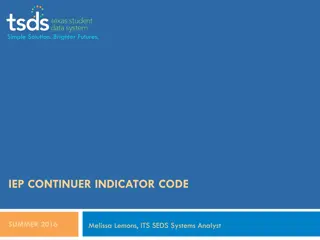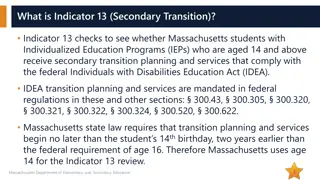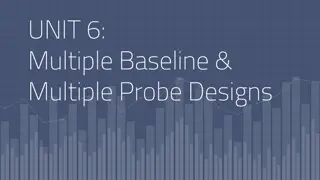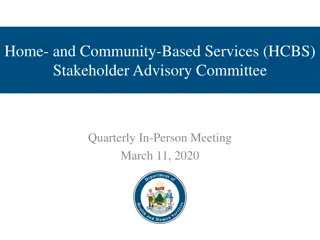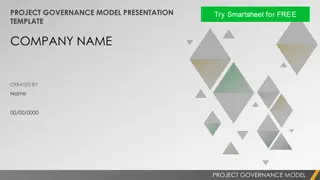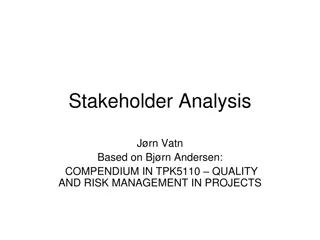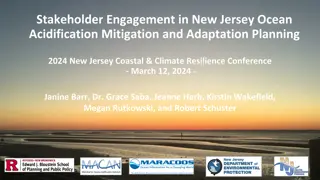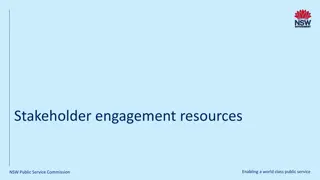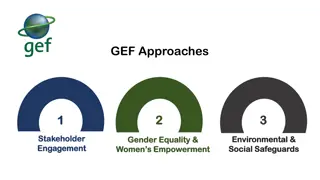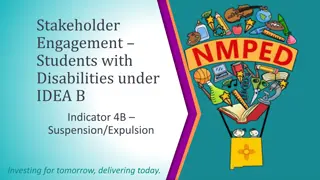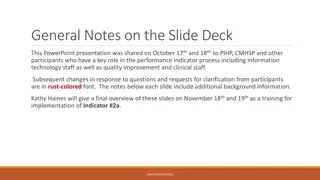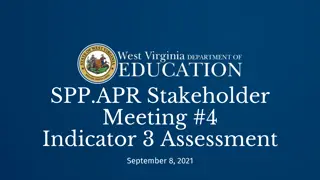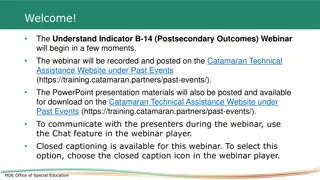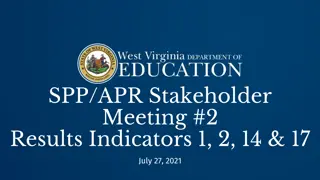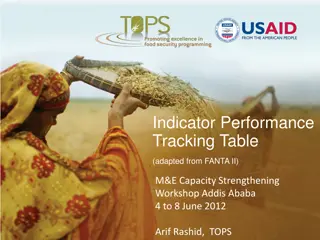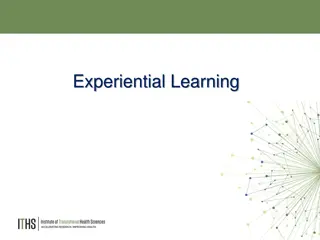Understanding Changes in Stakeholder Engagement for Indicator 3 Baseline and Target Setting
Explore the modifications in Part B State Performance Plan/Annual Performance Report (SPP/APR) Indicator 3 concerning children with IEPs on statewide assessments. Discover new requirements for stakeholder and parent engagement, gain insights into strategies for engaging stakeholders, and grasp the data focus, comparison between former and current Indicator 3, and reporting changes at state and LEA levels.
Download Presentation

Please find below an Image/Link to download the presentation.
The content on the website is provided AS IS for your information and personal use only. It may not be sold, licensed, or shared on other websites without obtaining consent from the author. Download presentation by click this link. If you encounter any issues during the download, it is possible that the publisher has removed the file from their server.
E N D
Presentation Transcript
Navigating Uncharted Waters: Engaging Stakeholders in Part B Indicator 3 Baseline and Target Setting August 2021
Objectives 1. Understand the changes made to Part B State Performance Plan/Annual Performance Report (SPP/APR) Indicator 3 Participation and Performance of Children With IEPs on Statewide Assessments 2. Understand the new SPP/APR requirements related to stakeholder and parent engagement and their implications for Indicator 3 3. Develop an awareness of a range of strategies to engage stakeholders in baseline and target setting for Indicator 3 2
SPP/APR Package for FFY 20202025 and Changes to Indicator 3: Participation and Performance of Children With IEPs on Statewide Assessments 3
Indicator 3 Data Overview Data Focus: Data Reported: Statewide assessments Two types Participation Regular assessments (Who took the test?) Achievement Alternate assessments (How did students perform?) 4
Comparison Between Former and Current Indicator 3 Former SPP/APR Current SPP/ APR Indicator 3A: Reserved. 3A: Participation rate for children with IEPs. Indicator 3B: Participation rate for children with IEPs. 3B: Proficiency rate for children with IEPs against grade level academic achievement standards. Indicator 3C: Proficiency rate for children with IEPs against grade level and alternate academic achievement standards. 3C: Proficiency rate for children with IEPs against alternate academic achievement standards. 3D: Gap in proficiency rates for children with IEPs and all students against grade level academic achievement standards. 5
Overview of Indicator 3 Changes States must report the proficiency gap between proficiency rates of children with disabilities (CWD) and all students on general assessments States must update baselines and targets and report progress on targets the FFY 2020 SPP/APR States must report assessment data by specific grades: grades 4, 8, and high school States must report proficiency data separately by general and alternate assessment All these changes to reporting at the state level also will occur at the LEA level States must report to the public on the performance of each LEA located in the state on the targets in the SPP/APR as soon as practicable, but no later than 120 days following the state s submission of its APR 6
FFY 20202025: Indicator 3 Data Rates to Report Indicator 3 Rates Calculation Participation rate percent 3A # of children with IEPs participating in an assessment total # of children with IEPs enrolled during the testing window # of children with IEPs scoring at or above proficient against grade level academic achievement standards 3B Proficiency rate percent total # of children with IEPs for whom a proficiency level was assigned for the regular assessment # of children with IEPs scoring at or above proficient against alternate academic achievement standards 3C Proficiency rate percent total # of children with IEPs who received a valid score and for whom a proficiency level was assigned for the alternate assessment Proficiency rate for all students scoring at or above proficient against grade level academic stand Proficiency rate for children with IEPs scoring at or above proficient against grade level academic achievement standards 3D Proficiency rate gap (Minus) 7
Baseline and Target Setting for Indicator 3 New targets needed? Indicator 3 component New baseline needed? 3A: Participation rate for children with IEPs. Maybe (states can use the baseline year for old Indicator 3B) Yes 3B: Proficiency rate for children with IEPs against grade level academic achievement standards (regular assessment). Yes Yes 3C: Proficiency rate for children with IEPs against alternate academic achievement standards (alternate assessment). Yes Yes 3D: Gap in proficiency rates for children with IEPs and all students against grade level academic achievement standards (regular assessment). Yes Yes 9
Indicator 3A Baseline: Two Options Continue with the baseline (formerly Indicator 3B) from the previous SPP/APR Establish a new baseline State must report 3A in grades 4, 8, and high school, so if states reported combined data for this indicator previously, the baseline may not be the same as in previous reports. If the state is proposing to revise its baseline data for indicator 3A, it must provide an explanation for that revision. 10
Indicator 3B and 3C Baseline Setting Review historical state data trends (e.g., last three years or national norms) Determine if baselines will be the same for all reported grades Determine if baselines will be the same for mathematics and reading/language arts Establish baselines What is the impact of missing 2019 20 statewide assessments on trend data? What is the impact of COVID-19 on student knowledge and skills on the 2020 21 statewide assessment results? What is the impact on proficiency rates of removing alternate assessment proficiency scores? Additional considerations 11
Indicator 3D Baseline Setting Calculate the gap in proficiency rates for children with IEPs and all students in reading/language arts and mathematics at grades 4, 8, and high school Review historical state data trends (e.g., last three years or national norms) Determine if baselines will be the same for all reported grades Determine if baselines will be the same for mathematics and reading/language arts Establish baselines What is the impact of missing 2019 20 statewide assessments on trend data? What is the impact of COVID-19 on student knowledge and skills on the 2020 21 statewide assessment results? Additional considerations 12
Indicator 3 Target Setting Targets should be rigorous and based on the advice of stakeholders Targets must cover the years of the SPP (FFY 2020 2025) States can establish FFY 2020 2025 targets that are lower than the targets from FFY 2016 2019 OSEP encourages states to provide information regarding this decision in their narratives 13
Indicator 3 Target Setting (cont.) Generally, targets are not approvable if they do not show improvement over baseline OSEP has allowed states to set targets that do not reflect improvement over baseline for 3A the FFY 2025 target does not need to show improvement over baseline if the FFY 2025 target is at least 95% (Universal Technical Assistance for Federal Fiscal Year [FFY] 2020-25, pg. 2) 14
Indicator 3A Target Setting: Participation Rates Example strategies for calculating the target Constant participation rate: Variable participation rate: No Increase: Increase: Participation rate target will not increase over the life of the SPP/APR. Participation rate will increase over the life of the SPP/APR. Targets will be the same for grades 4, 8, and high school (e.g., all targets 95%). Targets will vary based on grade level (e.g., 98% for grades 4 and 8 and 95% for high school). 15
Indicator 3B and 3C Target Setting: Proficiency Rates Example strategies for calculating the target Eyeball method: Look at data and make an educated guess about the approximate magnitude of relevant statistics. Trend lines: Look at trend line data to predict where the data should be in future years. Growth or change from year to year: Calculate the average growth/change from year to year in past years and add to the baseline and year-to- year targets. Percent increase: Increase by a set percent (e.g., 3% each year) or percentage points (e.g., 3 percentage points) every year. Start with the end goal and work backwards: Look at current proficiency rates and determine where they should be by 2025. Then decide if progress will be made in equal increments or increasingly larger targets? 16
Indicator 3D Target Setting: Gap Data Example strategies for calculating the target Start with the end goal and work backwards: Look at current proficiency rates and determine where they should be by 2025. Then decide if progress will be made in equal increments or increasingly larger targets? Eyeball method: Look at data and make an educated guess about the approximate magnitude of relevant statistics. Trend lines: Look at trend line data to predict where the data should be in future years. Growth or change from year to year: Calculate the average change in proficiency gap from year to year in past years and add to the baseline and year-to year targets. Percent decrease: Decrease the proficiency gap by a set percent (e.g., 3% each year) or percentage points (e.g., 3 percentage points) every year. 17
General Data Visualization Strategies Use the chart type appropriate for the data you are presenting Include only the data that stakeholders need to focus on in each display Be intentional with table and column titles, color, and boldness to emphasize key take-aways from the data, such as data that are outliers or below/above a certain target Use consistent axis scales to avoid confusion or misleading data Avoid over formatting with background colors, 3-D effects, and unnecessary distractions 18
General Data Visualization Strategies for Indicator 3 Disaggregate by content areas, grade levels, demographics, assessment type Show historical data of actual participation and proficiency against targets in SPP/APR Illustrate the gap between actual data and the target data by year (Target Deviation Bar Chart) 19
Strategies for Engaging Stakeholders in Indicator 3 Baseline and Target Setting 20
Requirements for State Descriptions of Stakeholder Engagement in SPP/APR In their FFY 2020 SPP/APR submission, states must report The number of parent members attending stakeholder meetings Interagency Coordinating Council Parent Center staff Parents from local and statewide advocacy and advisory committees Individual parents 21
Requirements for State Descriptions of Stakeholder Engagement in SPP/APR (cont.) A description of how the state engaged parent members and individual parents in Target setting Analyzing data Developing improvement strategies Evaluating progress 22
Requirements for State Descriptions of Stakeholder Engagement in SPP/APR (cont.) Description of the activities the state conducted to increase the capacity of diverse groups of parents to support the development and implementation of activities designed to improve outcomes for children with disabilities The mechanisms and timelines for Soliciting public input for target setting, analyzing data, developing improvement strategies, and evaluating progress Making the results of the target setting, data analysis, development of the improvement strategies, and evaluation available to the public 23
Questions to Consider: Meaningful Stakeholder Representation Who is involved in the process? To what extent do current engagement strategies ensure equitable stakeholder engagement in baseline and target setting activities for Indicator 3? What do trend data about children with disabilities reveal about subgroup participation and performance on statewide assessments? 24
Questions to Consider: Meaningful Stakeholder Representation (cont.) Who is involved in the process? (cont.) What barriers currently exist to obtaining diverse, inclusive, equitable stakeholder representation in baseline and target setting activities for Indicator 3? Consider Whom are you inviting to participate? How did you disseminate invitations? What options or flexibilities exist to accommodate a range of ways to participate What accommodations or supports do you make available to stakeholders to assist with their ability to participate? 25
Questions to Consider: Multiple Stakeholder Meeting Formats How do you convene stakeholders? To what extent do you design the current meeting formats to provide opportunities for active and authentic diverse stakeholder engagement in baseline and target setting? What options or flexibilities exist to accommodate a range of ways to participate? 26
Questions to Consider: Ensuring Meaningful Stakeholder Participation What steps are you taking to support authentic engagement of stakeholders? To what extent do you present the content of the meeting in ways that elicit meaningful and authentic stakeholder engagement in baseline and target setting? How do you present options to stakeholders or facilitate stakeholders developing their own targets? How do you identify and mitigate power dynamics between stakeholder groups? To what extent do stakeholders have multiple ways to weigh-in on baseline and target setting activities. 27
Wrap-Up During this meeting, you have Learned about the reporting changes made to Part B State Performance Plan/Annual Performance Report (SPP/APR) Indicator 3 Participation and Performance of Children With IEPs on Statewide Assessments Learned about requirements for baseline and target setting Considered barriers to and learned strategies for authentically and meaningfully engaging stakeholders in the baseline and target setting processes 28
For More Information Visit the IDC website http://ideadata.org/ Follow us on Twitter https://twitter.com/ideadatacenter Follow us on LinkedIn http://www.linkedin.com/company/idea-data-center 29
The contents of this presentation were developed under a grant from the U.S. Department of Education, #H373Y190001. However, the contents do not necessarily represent the policy of the U.S. Department of Education, and you should not assume endorsement by the federal government. Project Officers: Richelle Davis and Rebecca Smith 30
